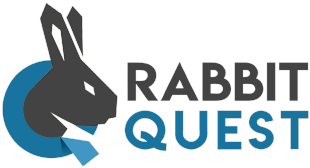Inform vs. Activate: Awakening the potential of your employee health program
Moving beyond awareness: Activating real change in employee health programs. Discover practical strategies for HR managers to shift from merely informing to truly activating employees towards improved health and vitality.
Time to read: 5 minutes
Imagine you've provided your employees with all the health information they need - guidelines on balanced nutrition, benefits of regular exercise, tips to handle stress, and more. However, despite the flood of information, the needle barely moves on your health metrics. You might be asking, "Why isn't this working?". Because let’s be honest, most people know that eating a big bag of chips on Friday evening or having that snack during the day is not healthy. So why is information not enough?
The reason is simple; providing information isn’t the same as taking action. The real challenge is to move from informing your employees to activating them. We always like to say; from information, to motivation, to activation, to continuation. Let's dive into some practical ways to make that transition.
Tip #1: Personalize the approach
One-size-fits-all doesn't work when it comes to health. People have different needs, preferences, and challenges. Use health assessment tools to understand each employee's unique health profile, then tailor your health program to meet these individual needs. By creating customized wellness plans, you not only show your employees that you're invested in their unique journey, but you also increase the chances of them engaging in the program. Employees are more likely to commit to a plan that's been created specifically for them. Plus, personalizing the approach allows for flexibility and adaptability, ensuring that the program remains relevant as employees' needs change over time.
Tip #2: Encourage peer support
Support from peers can significantly boost an individual's motivation to improve their health. Encourage your employees to form health support groups where they can share experiences, discuss challenges, and celebrate achievements together. This could take form in weekly meetings, online forums, or even casual group chats. The key is to create a safe space for discussion and encouragement. Remember, a supportive work environment is a healthier one, and people are more likely to stick to their health goals when they feel like they're not alone in their journey.
Tip #3: Gamify your health program
Turning health initiatives into a game can make them more engaging. Organize fitness challenges, create reward systems for healthy habits, or use gamified health apps. This not only keeps employees engaged but also builds a supportive, health-conscious community within your organization. By introducing an element of fun, you break down the intimidating barriers often associated with health and wellness. Moreover, competition can inspire employees to push their boundaries, and rewards can serve as tangible motivation for them to stick to their health goals.
Tip #4: Implement regular check-ins
Regular check-ins provide an opportunity to assess progress, address concerns, and adjust plans as needed. This ongoing dialogue shows that you're invested in their health journey and helps keep employees engaged and motivated. Whether it's a monthly meeting or a quarterly review, these check-ins should be designed as two-way conversations where employees feel heard and understood. Also, by tracking progress, you can celebrate the small victories along the way, which can boost morale and motivation. Regular check-ins can also help you identify any potential issues early, allowing for timely interventions.
Tip #5: Location independent
Technology offers many solutions to keep employees engaged in health programs. Consider using health and fitness apps, online coaching services, or virtual reality platforms for exercise and meditation. These tools not only make health activities more accessible but also more fun. They offer convenience, allowing employees to engage in wellness activities at their own pace and time. Besides, apps and platforms often come with tracking and reminders, helping employees stay consistent with their health goals. Remember, technology, when leveraged correctly, can be your powerful ally in promoting health and wellness in the workplace.
Tip #6: Provide access to professional guidance
While peer support and gamification can motivate employees, professional guidance ensures they're on the right track. Providing access to nutritionists, personal trainers, or mental health professionals can offer valuable support for employees as they work toward their health goals. These professionals can give personalized advice, address unique health concerns, and ensure that employees are following safe and effective practices. Plus, having access to expert guidance can boost employee confidence and commitment to the wellness program. After all, knowing there's a professional in your corner can be a game-changer.
Tip #7: Encourage mindfulness and mental health
Physical health is only one piece of the puzzle. Remember to integrate mindfulness and mental health into your program. This could be through stress management workshops, mindfulness meditation sessions, or even just encouraging regular breaks during the workday. Promoting mental health sends the message that you care about your employees' overall wellbeing, not just their physical fitness. Plus, mindful practices can enhance focus, productivity, and emotional resilience, contributing to a healthier, happier, and more harmonious workplace.
Tip #8: Foster a health-conscious culture
Last but not least, it's important to create a work culture that supports health and wellness. This could mean establishing a healthy food policy in the office, providing standing desks, or encouraging walk-and-talk meetings. When health and wellness are part of the company culture, employees are more likely to be proactive in managing their own health. By fostering a health-conscious culture, you're making wellness the norm, not an exception. And remember, when leaders walk the talk, it sets a powerful example that inspires employees to do the same. Creating a culture that prioritizes health shows your employees that their wellbeing matters, which can, in turn, boost morale, productivity, and loyalty.
Eight solid tips to transform your health program from a passive information hub into an active wellness community. The challenge lies not in the amount of information provided, but in the way it's delivered and how we inspire action. Let's move from just filling minds with knowledge to filling hearts with motivation and hands with tools for change. Because when information leads to action, that's where real change begins. So, are you ready to activate? Your employees are eager and waiting!




